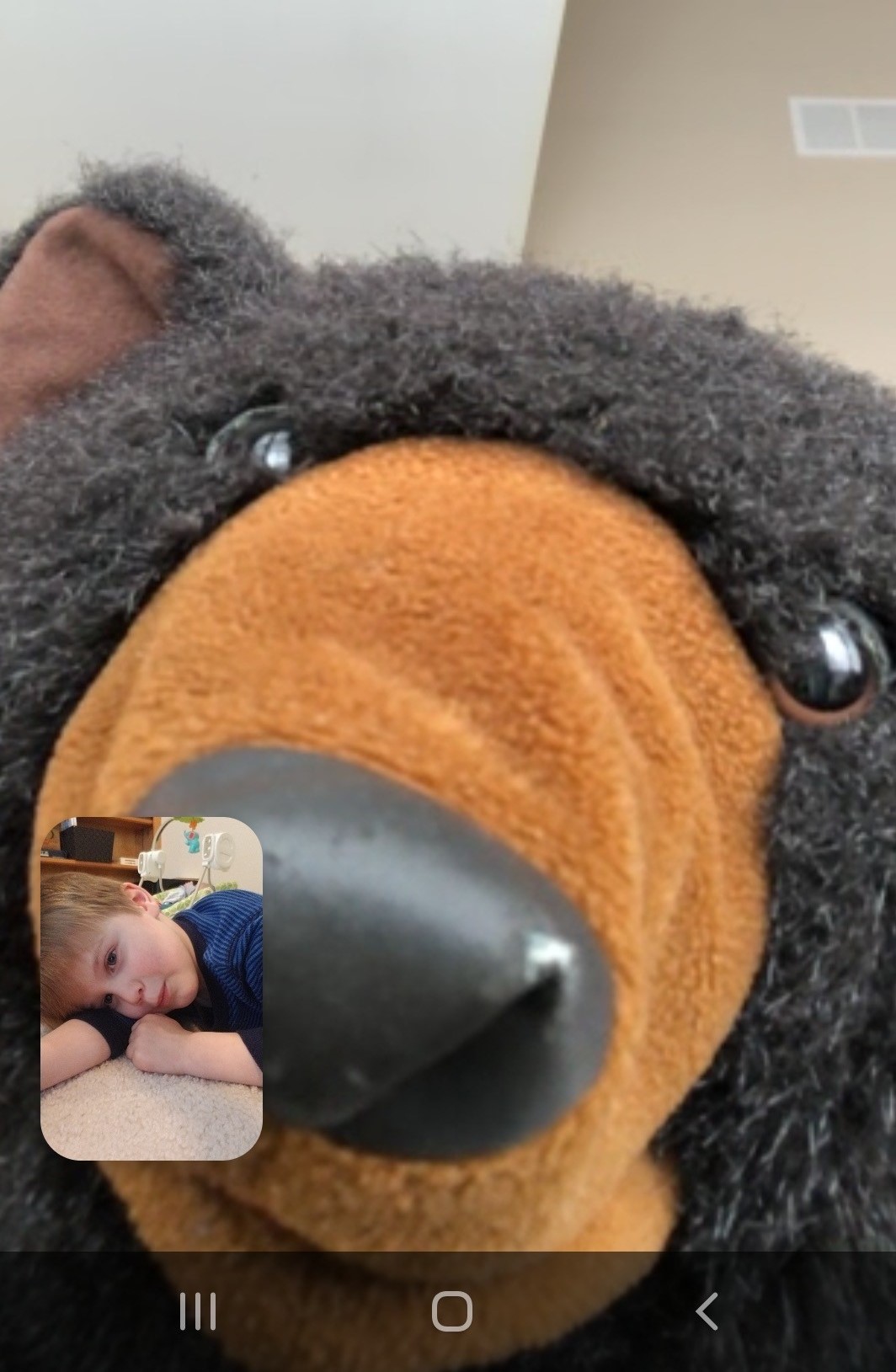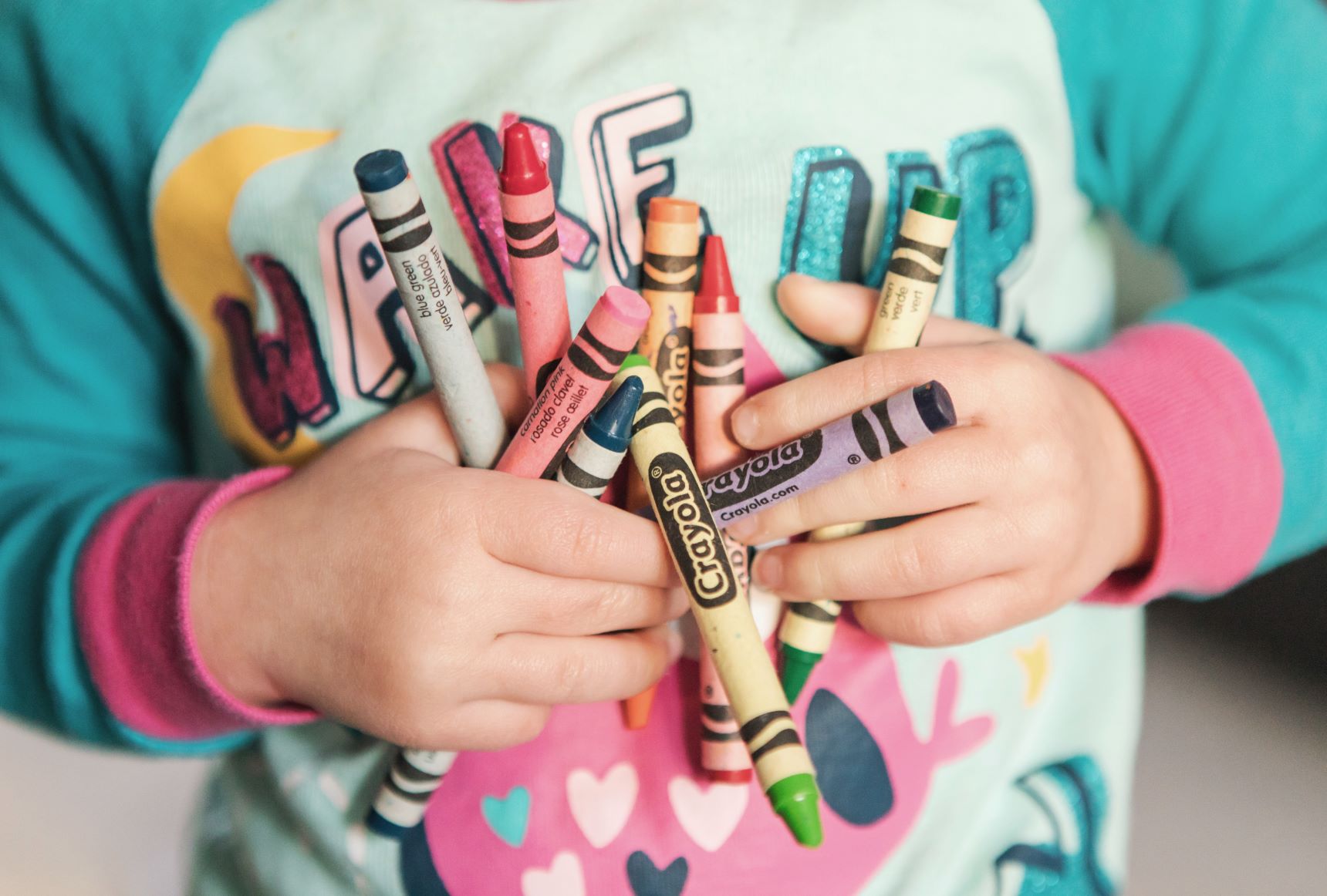It’s so wonderful to be able to connect through technology with friends and families we can’t visit during the Shelter-In-Place mandate. Hopeful to see my 2-year-old nephew, I tried video chatting with him (with the help of Mom, of course.) It didn’t go well. I saw one teeny glimpse of his grumpy face, and then just heard:
“I don’t WANT to talk to Aunt Alli.”
“NO!”
“I WON’T!”
And then my sister apologetically suggested we try another time.
I can’t really blame the kid. This is weird! This is different! And any kind of chatting is something that kids don’t really do anyway - ask a 2-year-old “How are you?” and they typically respond with a blank stare.
So, with some trial and error, and the help of my sister and nephew, I’ve figured out some strategies to make the Facetime (or Zoom or Duo) experience more enjoyable for all!

1. Use a puppet. On a whim I tried talking to my nephew as a bear puppet, and he was completely enthralled. If you don’t have a puppet, try making one - glue or sew a couple of button eyes on a sock. It doesn’t have to look pretty; just give it a name and maybe a silly voice and your toddler will fall in love. My mother delights her grandchild with “Little Man,” which is just her two fingers walking and dancing around.
2. Sing a song. When a toddler isn’t particularly focused, the sound of a song may stop and quiet her. Music is magic that way! Try a well known favorite, like “The Wheels on the Bus,” “If You’re Happy and You Know It,” or “This Little Light of Mine.”
3. Tell a familiar story. If you have a simple picture book (see our list of great toddler books), you could share that (though make sure your audience can see the pictures!). But you can also tell a story you know by heart. Try “The Three Little Pigs,” and see if your toddler joins in with “Not by the hair of my chinny chin chin!” Any story with repeating phrases will work well.
 4. Request a show-and-tell. Young children aren’t yet skilled at abstract conversation. Asking “what did you do today?” might be frustrating if a child doesn’t remember, or isn’t sure what you mean. But asking, “Can you show me one of your toys/books/something you made?” will be much more rewarding. Once you have something to talk about that’s literally in the child’s hands, your conversation becomes much more concrete. “Does it have wheels?” “What’s its name?” “What colors do you see?” etc. And if the toddler doesn’t have access to stuff, there is always something to show - “Where are your ears?” “Show me your socks!” “Show me thumbs up!"
4. Request a show-and-tell. Young children aren’t yet skilled at abstract conversation. Asking “what did you do today?” might be frustrating if a child doesn’t remember, or isn’t sure what you mean. But asking, “Can you show me one of your toys/books/something you made?” will be much more rewarding. Once you have something to talk about that’s literally in the child’s hands, your conversation becomes much more concrete. “Does it have wheels?” “What’s its name?” “What colors do you see?” etc. And if the toddler doesn’t have access to stuff, there is always something to show - “Where are your ears?” “Show me your socks!” “Show me thumbs up!"
5. Make it a date - a recurring date, if possible. Ask the parent if you can schedule the call in advance, and then the parent can prime the child ahead of time - “It’s almost time for our call with Grammy! What should we tell her today?” The parent will also likely look forward to a new thing to do! And if this can happen frequently, and consistently (e.g., every Monday at 10 AM), it will become more and more comfortable for both of you.
Above all, be your lovely self. If it doesn’t feel natural to use a puppet, don’t fake it! If you hate the sound of your singing voice, then speak the words of a rhyme instead. Your attention, your love, your familiar face and voice are the things giving the experience so much value in a time that may feel confusing and even scary. Even if your toddler gets impatient and suddenly disappears from the screen, he knows that you are still there. And that’s the most important thing to share.
Take a mindful moment: Try to look at the world from the point of view of a child. Let go of your own worldview for at least a few minutes.
 Youth Services Librarian Allison
Youth Services Librarian Allison

